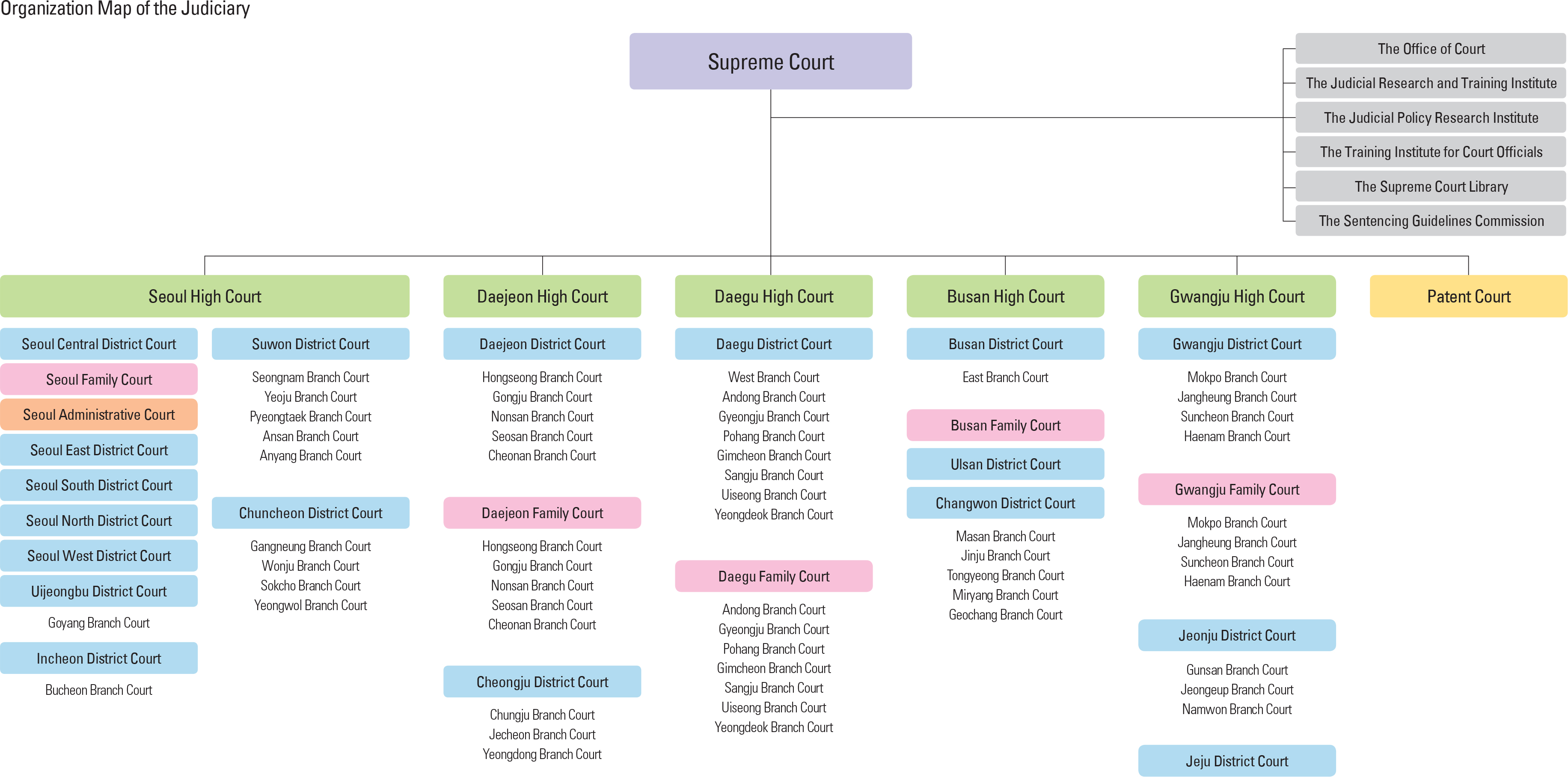The judiciary is a governmental body that judges cases according to the law of the nation and includes the Supreme Court and all lower level courts under its jurisdiction. The judiciary structure includes the High Courts below the Supreme Court. High Courts all have District Courts, Family Courts, and Branch Courts of the District Courts under their judicial circuits. The High Courts and associated courts are distributed locally across the country so that people have convenient access to the courts for the progress of civil, criminal, and family cases. The Patent Court has been established as a special court under the Supreme Court.
The Supreme Court is the highest court in the nation, and its judges hear appeals that will be met with final decisions. As a single-trial court, it mostly handles final appeals cases. As the final jurisdiction, the Supreme Court has exclusive jurisdiction on the cases regarding the decisions of the Marine Accidents Inquiry Agency as well as cases about the validity of presidential and parliamentary elections. The Supreme Court also has jurisdiction regarding whether orders, rulings, or judgments of each Court are unconstitutional. Supreme Court decisions are made either by the Council of all justices or by the division court of four justices. In the case of the Supreme Court Justices Council, its quorum is 2 3 of all justices including the Chief Justice, and a decision is then made by the majority of attendees. In the case of the four justice division court, a unanimous decision is required.
The Supreme Court Justices Council consists of a Chief Justice and 13 justices. The Chief Justice is appointed by the President and is confirmed by the National Assembly. The term of the Chief Justice is six years, and it cannot be renewed. With the recommendation from a Chief Justice, Supreme Court justices are appointed by the President and are confirmed by the National Assembly. They work for a 6-year term and are allowed to have additional terms. The affiliated organizations under the Supreme Court are the Office of Court Administration, the Judicial Research and Training Institute, the Judicial Policy Institute, the Training Institute for Court Officials, the Supreme Court Library, and the Sentencing Guidelines Commission. The judicial administration supports operating the Judiciary organizations including personnel, budgets, accounts, and facility maintenance. The Chief Justice of the Supreme Court directs the judicial administration and supervises public officials. The Chief Justice of the Supreme Court in particular can delegate part of directing and supervising authorities of judicial administrative works to the Minister of the National Court Administration, the Directors of lower courts, the Director of the Judicial Research and Training Institute, the Director of Training Institute for Court Officials or the Director of Supreme Court Library. The Minister of the National Court Administration, who is also one of the Supreme Court justices, manages the Office of Court Administration and supervises the works of the judicial administration. The Chief Justice of the Supreme Court, however, handles important judicial administration work in coordination with the Supreme Court Justices’ Council.
